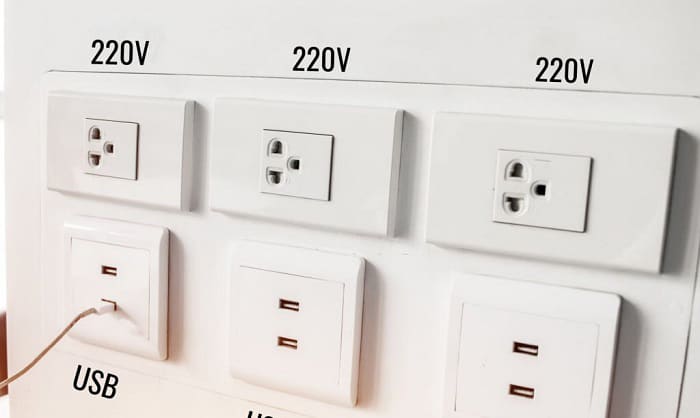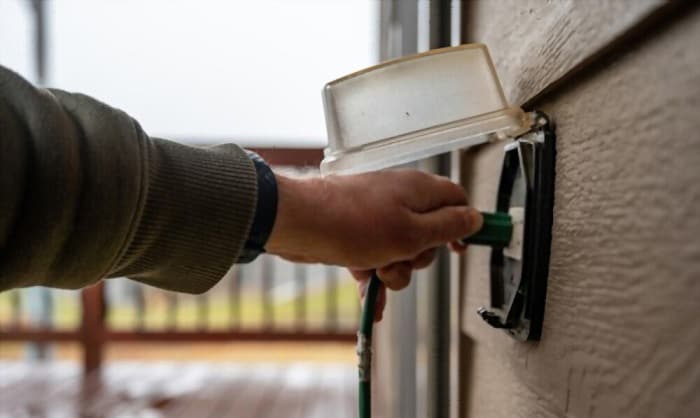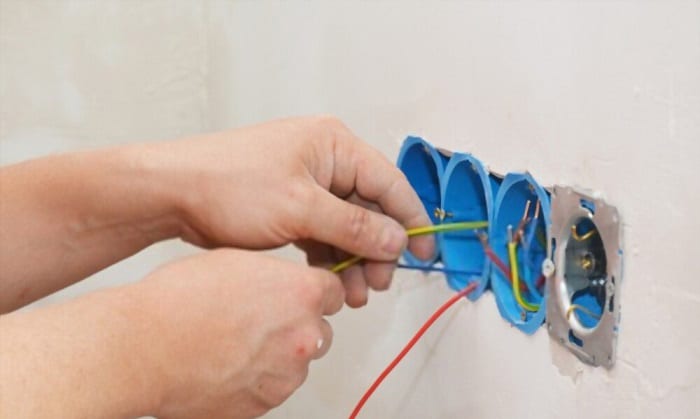The outlet is a safe choice when hooking up to the main grid. Enough outlets in a room would decrease the need for less-safe extension cords.
While most outlets in a US home have 120v, some energy-hungry appliances need 220v-240v in one breaker, and some people even want multiple 220v outlets per breaker for different reasons.
So how many 220v outlets per breaker is possible? Theoretically, a breaker can have unlimited outlets, but not all may operate at the same time.
Table of Contents
Power, Current, Voltage
An electrical appliance can work properly if it can draw the right amount of current for the power rating it has at a certain voltage. This is expressed as:
Current (in amperes) = Power (in watts) ÷ Voltage (in volts)
This can be used to determine the current that can be drawn by electrical appliances. For example, a water heater has 4000 watts, and the current it can draw on a 120v outlet will be:
Current = 4000 watts ÷ 120 volts = 33.3 amperes
This is too much for the common 110V-120-V US outlet with 15-ampere, 20-ampere or even the 30-ampere outlet and the circuit breaker will frequently trip.
However, a 220V-240V-outlet can help solve this problem. Because power-hungry appliances are becoming more common, 220V outlets on 100 amp service are becoming more available in modern homes. In this case, the current that can be drawn by the water heater will be:
Current = 4000 watts ÷ 220 volts = 18.2 amperes
This load can be handled by the 30-ampere outlet without much of an issue.
This is also true if appliances are plugged in multiple outlets in one circuit.
If the total current drawn by each appliance will not exceed the prescribed maximum current stated by regulations, then having a double 220v outlet, or even a 220v multiple outlet will be fine in theory.
The US National Electrical Code of 2020
The National Fire Protection Association (NFPA) in the US publishes the NFPA 70 or the National Electrical Code (NEC) as a guide for electrical installations to reduce the risk of electrical hazards.
It covers all aspects of electrical installations, including outlets.
Article 210.23 (A) (1) shows that multiple outlets are allowed in branch circuits for cord-and-plug-connected appliances if it does not exceed 80% of the current rating of the branch circuit.
- Thus, branch circuits that are rated for 15-amperes, 20-amperes, or 30-amperes should have maximum loads of up to 12-amperes, 16-amperes, and 24-amperes respectively.
From our 4000-watt water heater example, using a 30-ampere circuit over a 20-ampere circuit is best because the current draw of the heater does not exceed the 24-ampere limit of the former but exceeds the 16-ampere limit of the latter.
If multiple outlets are available in the branch circuit, the total current drawn by all outlets from the branch must not exceed 80% of the current rating of the branch circuit.
However, since most 220V appliances need more power than the usual 110V-120V appliance, using two or more of outlets at the same time will draw a lot of current to the branch circuit. It increases the chance of exceeding the current limit and tripping the breaker.
Ways of Increasing the Number of Outlets
A single or dual 220v outlet is the normally installed kind of outlet. From these usual outlets, several techniques can be used to increase the number of available receptacles.
However, these techniques must be done by a certified electrician or be inspected to comply with local electrical codes.
- One way is to daisy chain 220 volt outlets. This method connects all the outlets in a series connections.
A benefit of this method is that lesser conductors may be used compared to other techniques.
A big drawback, however, is that if one outlet malfunctions, the entire branch and all the receptacles in that branch malfunction too.
Another drawback is that the appliance that draws the most current from the branch will change the voltage of the other appliances simultaneously plugged since all the outlets are in series and experience only one current flow.
- Another way to increase the number of outlets is to piggyback 220 outlet to an existing outlet.
This method connects an outlet to an existing one in parallel. This method allows multiple outlets to function with their required voltage and draw the necessary current they individually need, unlike the daisy chain method.
It does require more conductors, but the malfunction of one outlet will not affect all the outlets in the branch.
- The last way is to use a splitter box or a splitter cable.
This allows multiple outlets to be plugged into a single receptacle. While this is a convenient choice, this could be a temporary fix until a fixed outlet is installed.
Conclusion
Multiple outlets may be installed if they are not used simultaneously and do not exceed the limits set by regulations. How many 220v outlets per breaker are installed will depend on the needs of the homeowner, and the different ways to increase the number of outlets must be done by qualified personnel.
All these guidelines are in place to ensure a safe home free from electrical hazards when tapping from the grid.
Read more about the top-rated GFCI Outlet to increase your electric system safety. And if you are finding similar topics, don’t forget to learn about the maximum outlets that can be on a 20 amp circuit breaker or 30 Amp Breaker.

I am Edwin Jones, in charge of designing content for Galvinpower. I aspire to use my experiences in marketing to create reliable and necessary information to help our readers. It has been fun to work with Andrew and apply his incredible knowledge to our content.



